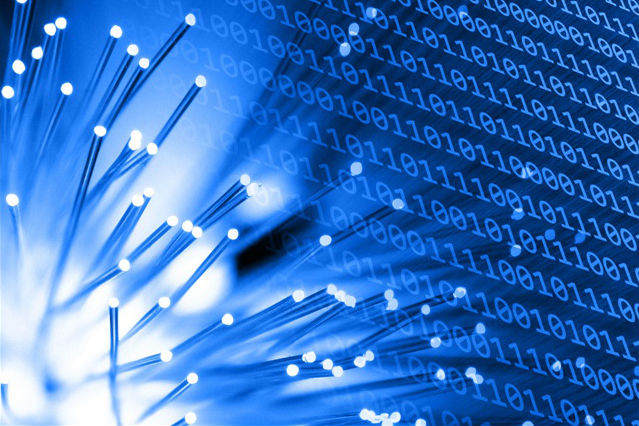Google Fiber and the super internet
January 30, 2015
Trending this week on the interwebs was the announcement that Google will now offer its fiber-optic internet and television service in four new cities and their surrounding areas. The lucky municipalities include Atlanta, Charlotte, Nashville, and Raleigh-Durham.
But what is so exciting about a company offering breakneck communication speeds over a fancy cable with a flashlight at both ends?
Actually, it’s a bit more complex than that, but the idea is simple. Fiber-optic communication works on the premise of light traveling down a special glass fiber in the form of a carrier wave. Basically, a transmitter at one end converts an electrical signal to an optic one, then a receiver turns the light back into an electrical signal. That light travels really fast down the cable, allowing for a lot more data to travel a lot faster.
Fiber-optic communication has been around since the 1970’s. Verizon FIOS uses fiber-optic cable instead of traditional copper cable to get their services around the neighborhood. You may have seen your friends get Verizon FIOS before it was even available to you because fiber-optic services like these require the installation of an all new infrastructure, hence why Google Fiber isn’t available to everyone.
Why is this such a big deal?
These fiber-optic internet services have the ability to carry information to your house much faster than traditional broadband internet. According to the Ookla NetIndex, the average download speed is 32.4 Mbps in the United States. These fiber-optic companies like AT&T, Google Fiber, and Grande Communications claim speeds of up to 1000 Mbps. It can be up to “100 times faster than traditional broadband internet”. If you think your home internet is fast now, imagine how fast you could check Facebook with this ultrafast fiber-optic internet. According to Verizon’s CFO Fran Shammo, there isn’t a market for 1000 Mbps to the home, and Verizon currently doesn’t offer it despite the claim that they have the infrastructure in place to do it. Regardless, some special internet service providers are stepping up to the gigabit plate.
These fiber-optic connections are not for internet. Speeds like this also provide for the transmission of full HD content to your television. Google Fiber, for example, offers a DVR service that allows for the recording of 8 shows at a time and up to 500 hours of content.
When will Pittsburgh residents see Google Fiber?
Probably not anytime soon. Mayor Peduto started lobbying for us to catch a spot on Google’s expansion list back when it was a pilot program in just two cities. But Pittsburgh’s many hills, rivers, and ancient infrastructure might make other cities a little more desirable, and Pittsburgh is currently left off the list of planned cities. The future of Google Fiber might not be so bright here, but fiber-optic communication is still a big part of the infrastructure in Pittsburgh, as well as the world.
One thousand Mbps is extremely fast, but Bell Labs has achieved speeds of 100 Petabytes per second over 1 kilometer in the laboratory with fiber-optic technology. That’s a long way off, not only due to realistic technological barriers, but also because that is far faster than anyone will need for a quite a while. To put 100 Pbps in perspective, in 2009, Google was reportedly preparing to store an exabyte of information. That means you could move all of the data Google has collected, one kilometer in less than 20 minutes.
Fiber is not just used by ISPs to get TV and Internet to the home. The number one way to get video from the control room to the screens in the lobby in newer venues like Consol Energy Center is fiber. Seven fiber-optic cables connect the first two ESPN Monday Night Football broadcast trucks together, and fiber is how you can look at a website being hosted in England from the United States.
Whether you’re ready to pack your bags and move to Atlanta or not, Google and other companies are making it easier for people and communities to connect with each other, as well as the world. Fiber-optics have been around a while, but we only now seem to be testing their strength. As technologies like fiber-optics advance, the speed at which people and machines connect with each other will increase.
Whether that’s a good thing or not is for you to decide.












